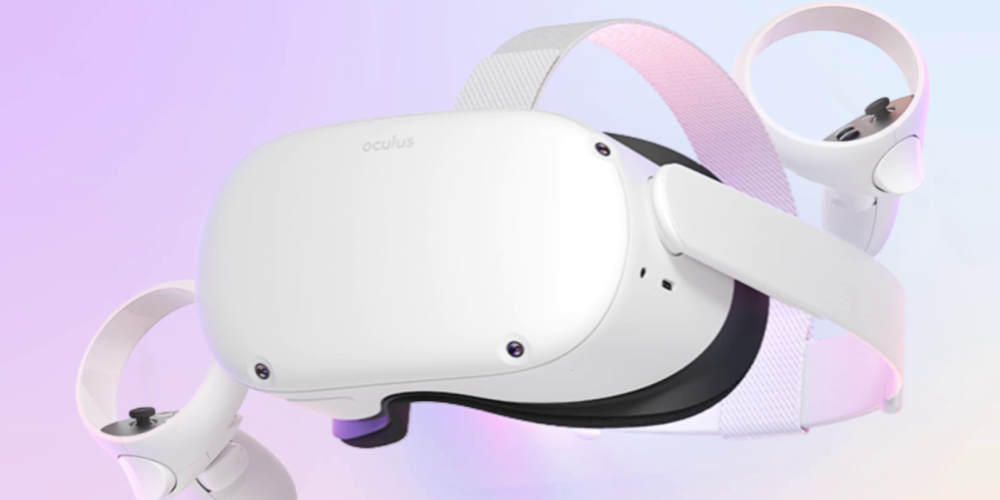Meta’s Quest 2 Virtual Reality Headsets Will Become More Powerful

Meta, the tech company behind the popular Quest 2 VR headset, recently announced that they are giving developers an upgrade in the form of 7 percent more GPU compute power. This means that more power can be used for apps and games, and the visuals will look even better.
The upgrade works through a new 525MHz GPU frequency, which is up from the previous 490MHz, and Meta’s “dynamic clocking system”. This system will automatically increase the frequency when it senses an app could use more power. To take advantage of the increased power, the user must open an app and then take off their Quest 2, then put it back on. With the upcoming v49 update, the increased power will be available in an app right away.
The new GPU frequency of 525MHz is a significant increase from the previous 490MHz. This should allow developers to create apps with higher pixel density and higher frame rates. Meta has also implemented a dynamic clocking system that will automatically adjust the frequency when needed.
The increased GPU power will enable developers to maintain higher visual quality without having to reduce the resolution to hit the target frame rate. The dynamic clocking system automatically increases the frequency of the GPU when it detects that the application would benefit from it. This improvement will help developers leverage higher pixel density without sacrificing the quality of the visuals.
Questions have been raised about Meta's future with the recent departure of John Carmack. On top of this, the high-end Meta Quest Pro was not highly praised. Despite this, the Quest 2 remains an excellent device, and hopefully, this increased power will result in an even better experience in games and apps.
Conclusion
Meta is committed to helping developers create the best applications and experiences for their users. With this increase in GPU power, developers will be able to develop better and more powerful applications on Meta Quest 2 devices. This will help Meta maintain its position as a leader in the VR headset market.
Latest posts
See more-
![The Last of Us Part II: In-Depth Character Analysis and Storyline Exploration]() Editor’s Choice
2024-08-11
The Last of Us Part II: In-Depth Character Analysis and Storyline Exploration
The Last of Us Part II is an action-adventure video game that has gained significant popularity since its inception. Developed with immense creative prowess by...
Editor’s Choice
2024-08-11
The Last of Us Part II: In-Depth Character Analysis and Storyline Exploration
The Last of Us Part II is an action-adventure video game that has gained significant popularity since its inception. Developed with immense creative prowess by...
-
![CrossCode Developer Announces Alabaster Dawn, Enters Early Access in Late 2025]() News
2024-08-12
CrossCode Developer Announces Alabaster Dawn, Enters Early Access in Late 2025
In 2021, Radical Fish Games initially introduced a new action RPG titled Project Terra. Now, they have officially named it Alabaster Dawn and announced that...
News
2024-08-12
CrossCode Developer Announces Alabaster Dawn, Enters Early Access in Late 2025
In 2021, Radical Fish Games initially introduced a new action RPG titled Project Terra. Now, they have officially named it Alabaster Dawn and announced that...
-
![Alabaster Dawn Planned to Have 30-60 Hours of Playtime, Demo Launching in Early 2025]() News
2024-08-13
Alabaster Dawn Planned to Have 30-60 Hours of Playtime, Demo Launching in Early 2025
Radical Fish Games has made an exciting announcement regarding their upcoming action RPG, Alabaster Dawn, which is set to enter early access in 2025. In...
News
2024-08-13
Alabaster Dawn Planned to Have 30-60 Hours of Playtime, Demo Launching in Early 2025
Radical Fish Games has made an exciting announcement regarding their upcoming action RPG, Alabaster Dawn, which is set to enter early access in 2025. In...
Latest Reviews
See more-
![]() Action
Cult of the Lamb
Action
Cult of the Lamb
-
![]() Action
WILD HEARTS™
Action
WILD HEARTS™
-
![]() Casual
Gacha Club
Casual
Gacha Club
-
![]() Action
Call of Duty®: Warzone™ 2.0
Action
Call of Duty®: Warzone™ 2.0
-
![]() Action
Gacha Cute
Action
Gacha Cute
-
![]() Action
Cuphead - The Delicious Last Course
Action
Cuphead - The Delicious Last Course










